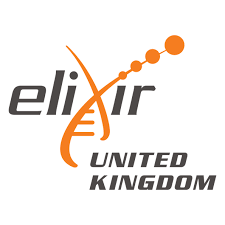GtoPdb is requesting financial support from commercial users. Please see our sustainability page for more information.
Contents:
| Quaternary Structure: Complexes |
| Interferon-α/β receptor |
Gene and Protein Information  |
||||||
| Species | TM | AA | Chromosomal Location | Gene Symbol | Gene Name | Reference |
| Human | 1 | 557 | 21q22.11 | IFNAR1 | interferon alpha and beta receptor subunit 1 | |
| Mouse | 1 | 590 | 16 52.98 cM | Ifnar1 | interferon (alpha and beta) receptor 1 | |
| Rat | - | - | Ifnar1 | interferon alpha and beta receptor subunit 1 | ||
Previous and Unofficial Names  |
| IFRC | interferon (alpha and beta) receptor 1 | interferon (alpha, beta and omega) receptor 1 | Ifar | IFN-alpha/betaR |
Database Links  |
|
| Alphafold | P17181 (Hs), P33896 (Mm) |
| CATH/Gene3D | 2.60.40.10 |
| ChEMBL Target | CHEMBL1887 (Hs) |
| DrugBank Target | P17181 (Hs) |
| Ensembl Gene | ENSG00000142166 (Hs), ENSMUSG00000022967 (Mm), ENSRNOG00000028594 (Rn) |
| Entrez Gene | 3454 (Hs), 15975 (Mm), 288264 (Rn) |
| Human Protein Atlas | ENSG00000142166 (Hs) |
| KEGG Gene | hsa:3454 (Hs), mmu:15975 (Mm), rno:288264 (Rn) |
| OMIM | 107450 (Hs) |
| Pharos | P17181 (Hs) |
| UniProtKB | P17181 (Hs), P33896 (Mm) |
| Wikipedia | IFNAR1 (Hs) |
Natural/Endogenous Ligands  |
| IFN-β {Sp: Human} |
Download all structure-activity data for this target as a CSV file 
| Agonists | |||||||||||||||||||||||||||||||||||||||||||||||||||||||||||||||||||||||||||||||||||
| Key to terms and symbols | Click column headers to sort | ||||||||||||||||||||||||||||||||||||||||||||||||||||||||||||||||||||||||||||||||||
|
|||||||||||||||||||||||||||||||||||||||||||||||||||||||||||||||||||||||||||||||||||
| Antibodies | |||||||||||||||||||||||||||||||||||||||||||||||||||
| Key to terms and symbols | Click column headers to sort | ||||||||||||||||||||||||||||||||||||||||||||||||||
|
|||||||||||||||||||||||||||||||||||||||||||||||||||
| Immunopharmacology Comments |
| IFNAR1 is a subunit of the functional receptor for type I interferons (NOT interferon γ). Type I interferons (IFN) exhibit an established anti-viral action. However, type I IFN signalling also appears to play a role in impaired resistance to a range of other pathogens (e.g. bacterial infection) [2-3]. A rare mutation in IFNAR1, identified in the Chinese population, that impairs type I IFN signalling, is associated with increased resistance to tuberculosis infection and reduced TB symptoms [5]. |
Biologically Significant Variants 
|
||||||||||||||
|
References
1. Cardarelli JM, Witte A, Srinivasan M. (2010) Interferon alpha receptor I antibodies and their use. Patent number: US7662381. Assignee: Medarex, Inc.. Priority date: 21/06/2004. Publication date: 16/02/2010.
2. Carrero JA. (2013) Confounding roles for type I interferons during bacterial and viral pathogenesis. Int Immunol, 25 (12): 663-9. [PMID:24158954]
3. Ng CT, Mendoza JL, Garcia KC, Oldstone MB. (2016) Alpha and Beta Type 1 Interferon Signaling: Passage for Diverse Biologic Outcomes. Cell, 164 (3): 349-52. [PMID:26824652]
4. Ward AC, Touw I, Yoshimura A. (2000) The Jak-Stat pathway in normal and perturbed hematopoiesis. Blood, 95 (1): 19-29. [PMID:10607680]
5. Zhang G, deWeerd NA, Stifter SA, Liu L, Zhou B, Wang W, Zhou Y, Ying B, Hu X, Matthews AY et al.. (2018) A proline deletion in IFNAR1 impairs IFN-signaling and underlies increased resistance to tuberculosis in humans. Nat Commun, 9 (1): 85. [PMID:29311663]
How to cite this page
Interferon receptor family: interferon α/β receptor 1. Last modified on 18/01/2018. Accessed on 09/12/2025. IUPHAR/BPS Guide to PHARMACOLOGY, https://www.guidetomalariapharmacology.org/GRAC/ObjectDisplayForward?objectId=1723.













